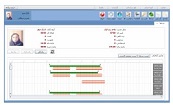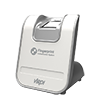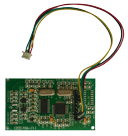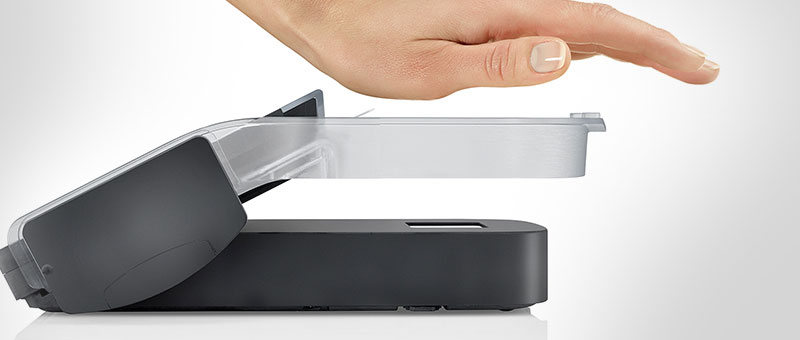Fujitsu’s palm secure deployed in world’s first palm vein authentication system at Korean airports. Passengers traveling on domestic flights in Korea can verify their identities just by holding out a hand, improving convenience and reducing congestion. Fujitsu Korea Ltd. (FKL) and Fujitsu Limited today announced that the Korea Airports Corporation (KAC) has deployed Fujitsu’s palm vein authentication system at all 14 domestic airports under its jurisdiction, to ameliorate congestion by identifying boarding passengers with biometric authentication.
Fujitsu’s palm vein authentication system at Korean airports
After checking in, passengers who have registered their palm vein patterns in advance can confirm their identity instantly by just holding out a hand and ticket over the gate, and they will not have to show their citizen ID card, which was necessary to confirm the passenger’s identity in the past. This will automate the process of visual identity confirmation with national ID cards, previously conducted by airport staff, thereby improving the accuracy of passenger identification and significantly shortening the time required for the process. This system began operation on December 28, 2018, and it has been used over 1 million times, with 160,000 individuals who have already registered their palm vein patterns.
The domestic airports under KAC’s jurisdiction (a total of 14 airports) are currently used by about 32 million people per year. Korean citizens, over the age of 14, travelling on domestic flights must have their identity checked before passing through boarding security, and this had previously been done on-site by showing a citizen ID card to security personnel. Because visually confirming a passenger’s identity takes time, this process could lead to congestion in the airports, and it had become an issue for KAC. In addition, passengers who had not brought their citizen ID cards were not able to board their flights, which compromised the quality of customer service. KAC has given attention to the high identification accuracy and convenience of palm vein authentication, and therefore decided to deploy a personal identification system using palm vein authentication.
Palm vein usage scenario:
Users can register in advance at registration devices installed in airports, linking their palm vein pattern with their citizen ID number, name, and phone number. Then, after scanning a barcode on their ticket, users can confirm their identity by holding out their hand at the newly-installed identity confirmation gates before security checkpoints.
Features of the newly deployed system:
- Provides greater security with a high individual identification rate:
- The gates that identify individuals before security checkpoints have now been equipped with palm vein authentication from the Fujitsu Group, which has a global track record of use in applications such as bank ATMs and access management of corporate PCs. Authentication using palm veins is highly secure as it identifies individuals with biometric data, and the process is both highly accurate and sanitary, due to its contactless operation.
- Improved convenience with smooth personal identification:
- Individual identification can be conducted instantly through the simple action of just holding out one’s hand over the gate. This will enhance the experience of passengers, as they can board even if they forget their citizen ID card.
- Amelioration of congestion within airports by reducing the time required for individual identification:
- By automating the process where security personnel visually confirm passenger identities, congestion can be significantly ameliorated.
Related posts:







































































